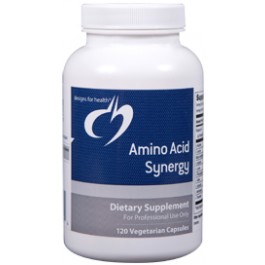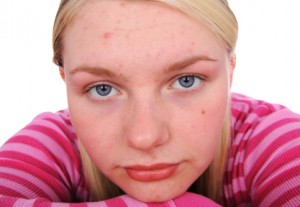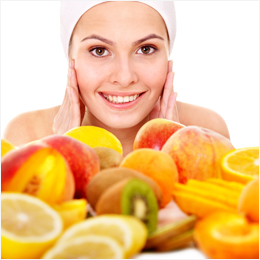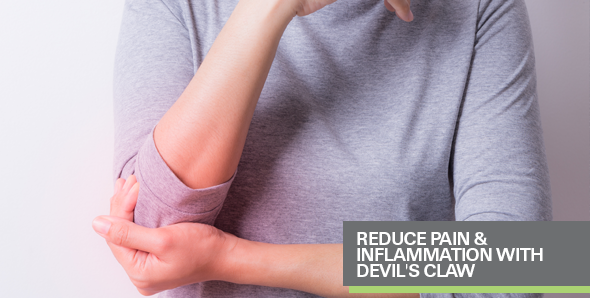
Amino Acid Synergy is useful as a general supplement to diets that are insufficient in quality protein, for athletes that require additional amino...
By Gene Bruno, MS, MHS – Dean of Academics, Huntington College of Health Sciences

Acne—the scourge of teenagers everywhere and an embarrassment to those adults who still suffer from this inflammatory skin condition. Acne is a disorder of the sebaceous glands of the skin. The sebaceous glands secrete sebum (skin oil) through pores and hair follicles, which are abundant on the face. Acne occurs when the pores become clogged with sebum. Blackheads, external plugs formed of sebum and dead cells, may be invaded by bacteria, which cause pus-filled inflammations, or pimples (aka, “zits”). The overlying skin may become stretched to the point of rupture, resulting in lesions and, in prolonged severe cases, eventual scarring. Adolescents are most prone to acquiring a case of the dreaded zits due to the increased production of androgens (male hormones) that occur during puberty, which causes increased activity in the sebaceous gland. In addition, certain foods (e.g., dairy products, junk food, etc.) may increase irritation in susceptible persons.
Conventional medical treatment for acne includes topical benzyl peroxide, retinoic acid, and oral antibiotics, as well as Accutane®, a synthetic form of vitamin A. An alternative or complementary program might consist of any or all of the following natural substances:
Besides being an important mineral in its own right, zinc works with vitamin A, helping to convert it into the active form of retinal in the body.1 Since vitamin A can be helpful in acne therapy (see discussion below) it is a good idea to use zinc to promote vitamin A metabolism. Furthermore, zinc is necessary for wound healing,2 which may be beneficial in healing acne. Also, zinc has displayed some anti- androgen activity,3 as well as some ability to inhibit the activity of bacteria found in the sebaceous glands. Most importantly, research has demonstrated that oral zinc therapy is capable of achieving significant improvement in acne sufferers.4 5 6 A daily dose of 30 mg, three times daily is recommended. Once acne is under control, a maintenance dose of 30 mg once or twice daily is appropriate. Since zinc could possibly lower body copper levels when taken over several months time, using a daily dietary supplement that provides copper is recommended.
Glutathione peroxidase (GP) is an antioxidant enzyme which includes selenium as a primary part of its makeup. Research has shown that blood levels of GP levels were lower in 506 patients with various skin disorders including acne. Supplementation with 200 mcg of selenium caused an increase in GP (as well as vitamin E), and showed encouraging clinical results in 6-8 weeks.7 In another study, GP levels were found to be significantly lower in male, but not female, acne patients. When these patients were supplemented with 200 mcg of selenium daily, good results were seen— especially in those with acne pustules.8

Research on vitamin A has demonstrated that this nutrient and some of its derivatives are able to suppress androgen activity on the sebaceous gland,9 10 which has successfully revolutionized dermatological therapy, particularly the management of acne.11 Another benefit with vitamin A is that it exerts anti-inflammatory effects—certainly a benefit in an inflammatory skin condition like acne.12 The problem is that very high doses of vitamin A, up to 300,000 I.U. daily, have been used to achieve the anti-acne effects. Even though some research has indicated that when 150,000-200,000 I.U. doses of vitamin A daily for months were safely used for this purpose,13 other research has warned against vitamin A’s potential toxicity when used for at these high doses.14 Consequently, these amounts should never be used in self-care, but only if you're working with a health care professional skilled and knowledgeable in nutritional and natural therapies. If you’re not planning to be monitored by a physician, but would still like to try some vitamin A on your own, limit daily doses to 10,000-25,000 I.U. daily.
When extra vitamin A is taken, it's best to take 400-800 I.U. daily of vitamin E also, to prevent overly rapid break down of the vitamin A. Furthermore, vitamins A and E are synergistic (enhance each other), and may actually have a complementary role in the treatment of acne.15 16
Gamma linolenic acid (GLA) is a natural fatty acid found in supplemental form in Borage Oil and Evening Primrose Oil. GLA has been used successfully in a number of dermatological conditions including various types of dermatitis.17 18 19 Of special interest to acne sufferers, GLA is also able to suppress androgen activity,20 which may show similar benefits to vitamin A and zinc. A 1300 mg capsule of Borage Oil or Evening Primrose oil should provide an adequate daily dose of GLA.
Since the skin is an excretory organ, bacteria may be excreted through the skin and contribute to the formation of, or exacerbate existing acne. Traditionally, various herbs have been used in acne to promote skin detoxification. One such herb with historical use as a detoxifier for skin disorders is Burdock.21 22 Burdock has both antimicrobial and diuretic actions (i.e., promotes urination).23
Due to its role as a liver and gallbladder detoxifier, as well as a diuretic,24 25 Dandelion Root is also recommended for skin disorders.26 As a matter of fact, herbalist Michael Tierra recommends Dandelion Root to stimulate bile production, and refers to this herb as, “one of the most wonderful liver tonic [sic] of all.”27 Furthermore, according to the Australian Journal of Medical Herbalism, Dandelion Root increases the secretion of bile and promotes cleansing of the liver, improved appetite, digestion, and elimination of wastes.28
Licorice Root, an herb with broad applications, is used for skin disorders, probably because of its antimicrobial activity.29 It also has mild anti- inflammatory activity,30 which may be helpful in inflammatory skin conditions like acne.
Since some of these herbs are potentially toxic with continued use, they should only be used on a temporary basis to help promote detoxification at the beginning of an acne program; no more than 4-6 weeks. Although expert opinion varies, approximately 600 mg daily of each of these herbs, in three divided doses, may show beneficial results.
Regarding topical treatment for acne, tea tree oil may be helpful. A large study compared the topical use of 5% tea tree oil to 5% benzoyl peroxide for common acne. Although the tea tree oil was slower and less potent in its action, it had far fewer side effects and was thus considered more effective overall.31 For topical treatment of acne, the oil may be used at a dilution of 5–15%.
Smart Supplementation™ is a free series of educational literature created by Huntington College of Health Sciences (HCHS) as a public service. Although copyrighted, it may be freely photocopied and distributed, but may not be altered in any way. Smart Supplementation™is not intended as medical advice. For diagnosis and treatment of any medical condition, consult your physician.
1. Whitney E, Rolfes S, Understanding Nutrition, Sixth Edition, West Publishing Company, Minneapolis/St. Paul, pp.. 418. 2. Ibid. 3. Pierard GE, Pierard-Franchimont C, Clin Exp Dermatol (1993) 18(5):410-3. 4. Verma KC, et al, Acta Derm Venereol (1980) 60(4):337-40. 5. Goransson K, et al, Acta Derm Venereol (1978) 58(5):443-8. 6. Liden S, et al, Acta Derm Venereol Suppl (1980) Suppl 89:47-52. 7. Juhlin L, et al, Acta Derm Venereol (1982) 62(3):211-4. 8. Michaelsson G, Edqvist LE, Acta Derm Venereol (1984) 64(1):p9-14. 9. Zouboulis CC, et al, Dermatology (1998) 196(1):21-31. 10. Saurat JH, Presse Med (1994) 23(34):1551-3. 11. Griffiths CE, Hosp Med (1998) 59(1):12-6. 12. Camisa C, et al, J Am Acad Dermatol (1982) 6(4 Pt 2 Suppl):620-9. 13. Kalkoff KW, Bickhardt R, Hautarzt (1976) 27(4):160-5. 14. Drouet A, Valance J, Rev Neurol (1998) 154(3):253-6. 15. Ayres S Jr, et al, Cutis (1979) 23(5):689-90. 16. Ayres S Jr, et al, Cutis (1981) 28(5):41-2. 17. Andreassi M, et al, J Int Med Res (1997) 25(5):266-74. 18. Borrek S, et al, Klin Padiatr (1997) 209(3):100-4. 19. Fiocchi A, et al, J Int Med Res (1994) 22(1):24-32. 20. Liao S, J Formos Med Assoc (1994) 93(9):741-51. 21. Mowrey D, The Scientific Validation of Herbal Medicine (1986) Cormorant Books, Lehi, Utah, p. 249. 22. Foster S, 101 Medicinal Herbs: An Illustrated Guide (1998) Interweave Press, Loveland, Colorado, pp. 42-43. 23. Fetrow C, Availa J, Professional’s Handbook of Complementary & Alternative Medicines (1999) Springhouse Corp., Springhouse, Pennsylvania, p. 110-112. 24. Blumenthal M, ed, et al, The Complete German Commission E Monographs: Therapeutic Guide to Herbal Medicines (1998) American Botanical Council, Austin, Texas, p. 120. 25. Fleming T, PDR for Herbal Medicines (1998) Medical Economics Company, Montvale, New Jersey, p. 1174-6. 26. Mowrey D, p. 249. 27. Tierra M, International Journal of Alternative and Complementary Medicine, (1997) February, pp. 23-25. 28. Salmond S, Australian Journal of Medical Herbalism (1997) 9(1):14-18. 29. Mowrey D, p. 249-50. 30. Fetrow C, p. 393-6. 31. Bassett IB, Pannowitz DL, Barnetson R, Med J Austral (1990) 53:455–58.

Amino Acid Synergy is useful as a general supplement to diets that are insufficient in quality protein, for athletes that require additional amino...

Devil's Claw is indigenous to southern Africa where, for thousands of years, tribes prepared the herb as an internal remedy for